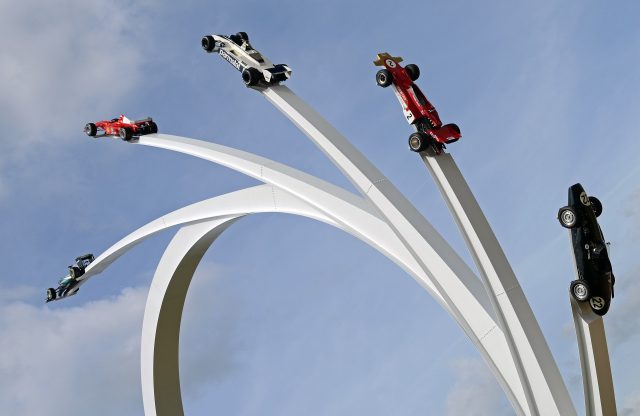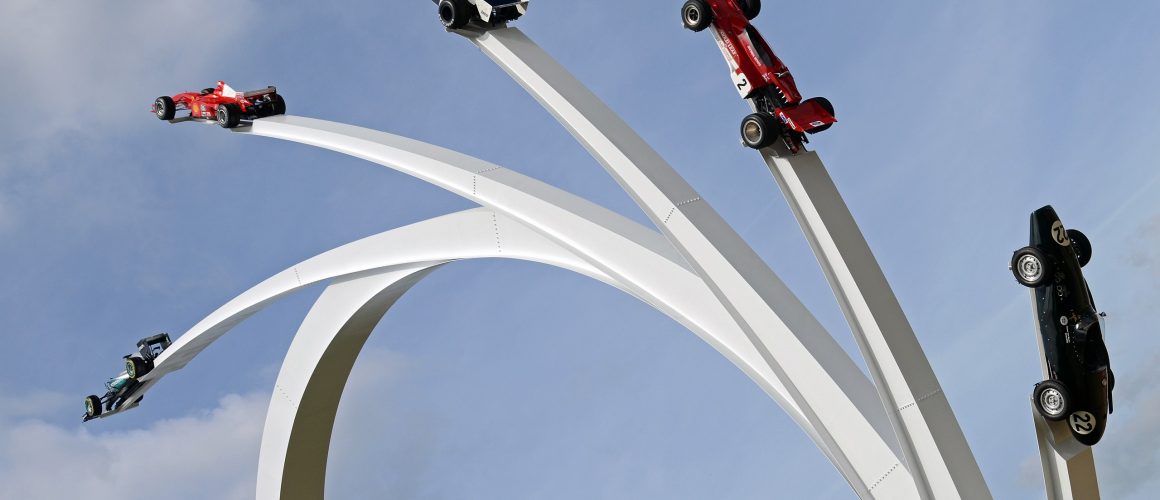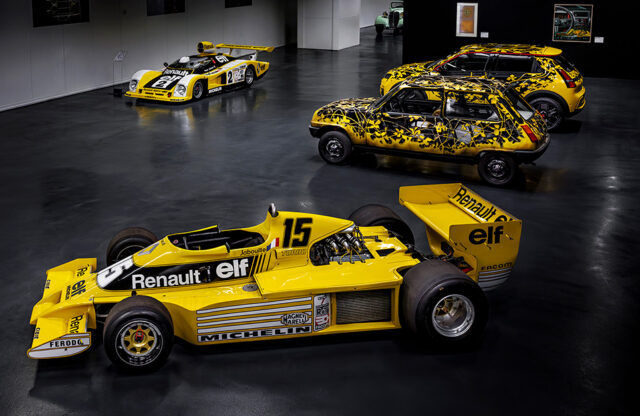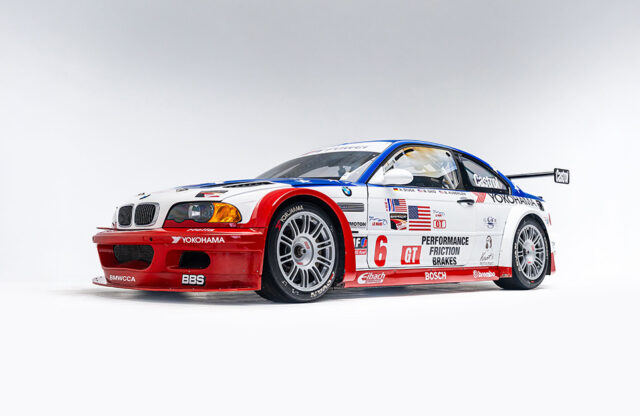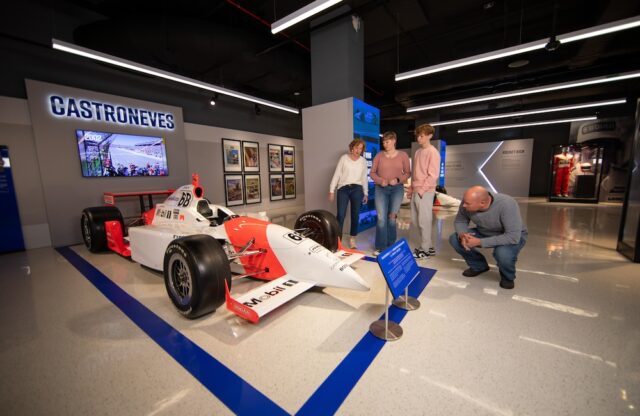WORDS: ROBERT DEAN | PHOTOS: LITTLEHAMPTON WELDING LTD/WIKIMEDIA COMMONS
At the Goodwood Festival of Speed, when you look up at the magnificent Gerry Judah sculptures towering 100 feet above you, have you ever wondered how the cars are positioned on the structure in the first place? So did I, until I had to do it – and then I discovered that, as with all good magic tricks, it’s really quite easy once you know how.
This story first appeared in Magneto issue 14.
Under the grass at the base are concrete blocks weighing 30 tonnes. The base of the sculptures weighs in at 16-odd tonnes, to which several ‘arms’ are attached. The numbers are incredible. I first helped put a car on a sculpture in 2016, to celebrate BMW’s centenary. The design featured six giant steel spikes supporting three historic models. One of those was a Formula 1 Brabham-BMW BT52 – upside down. The finished piece looked fantastic, but the process wasn’t without its headaches.
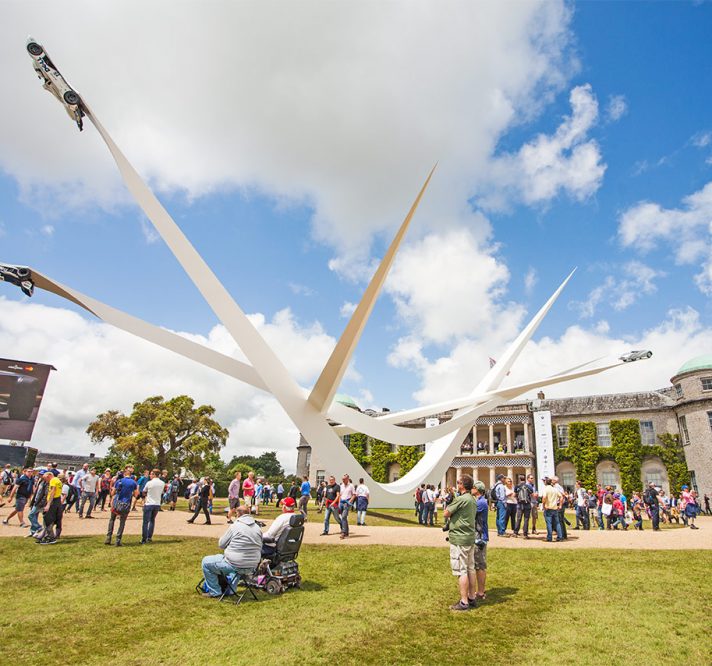
Charles and I repaired to the balcony of Goodwood House to watch while we nervously drank tea
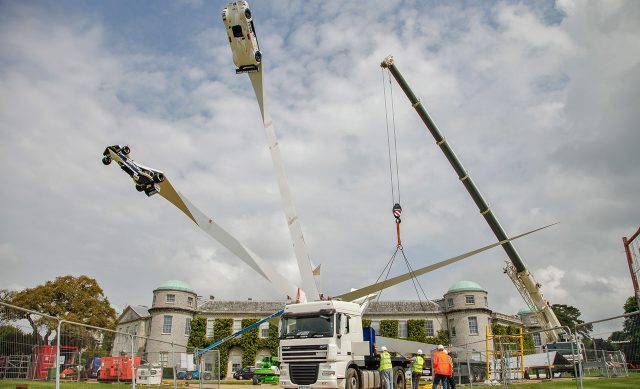

Littlehampton Welding Ltd makes all of the Goodwood sculptures. The boss called, asking whether his team could come and measure this, that and the other on Mr Ecclestone’s Brabham. Eventually, realising things were getting complicated, I suggested that I take the car there so they could measure it to their hearts’ content. Apparently I was the first person to ever do this – but I’m jolly glad I did.
I found out that the Brabham was to be hung upside down with straps around the wheels holding it to the arm. This rang alarm bells, because I remembered discussing the BT52 with Gordon Murray; it is one of his favourite cars. He told me that the suspension was held together by a small circlip on top of the dampers, because all the forces were designed to go upwards. I realised that if we dangled the BT52 from its wheels, the forces would all be in the opposite direction – and those circlips would be supporting the car’s entire weight.
I spent a day with the engineers, and helped design extra strap-down points at the front of the chassis and the engine, which would be hidden when the car was installed. This idea was accepted, and all was well.
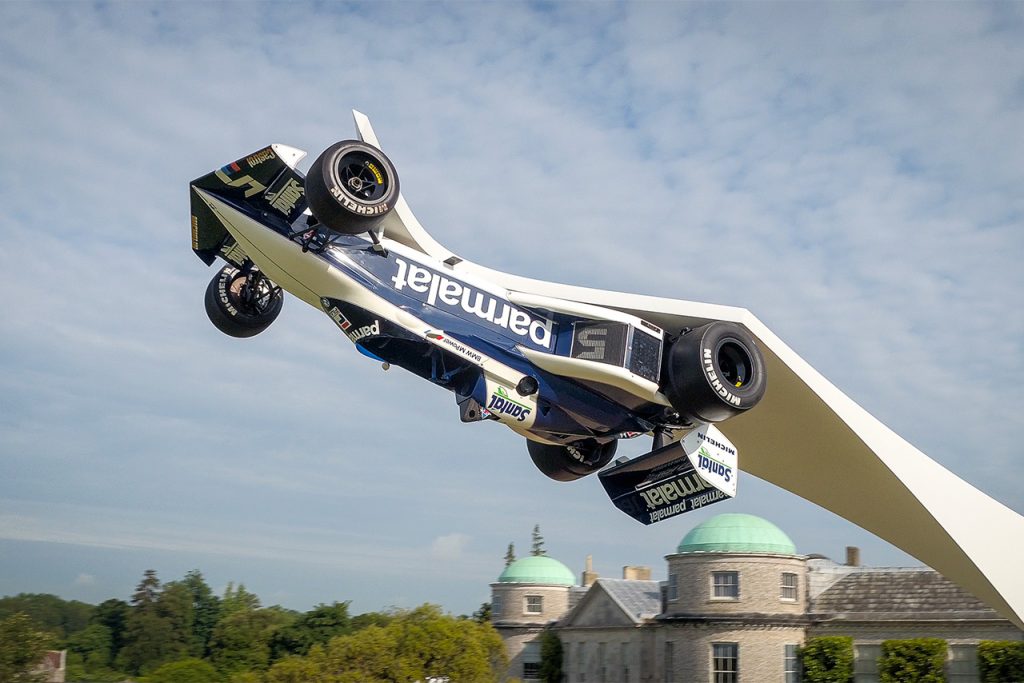
Another issue was that the BT52’s original front tyres didn’t hold air for more than a day. Because the wheels were one of the primary forms of securing the car, I had to find some used rubber – but I made a huge mistake when I procured low-profile tyres instead of the high-profile versions used in the 1980s. This made the body touch the ground…
Thinking “never mind”, I simply had some spacers made to go under the springs, which raised the car again. What I hadn’t realised was that the steel ‘cups’ the wheels sat in had been made to the original tyre radius, so when I took the Brabham back to Littlehampton Welding for the final fitting, the low-profile rubber wasn’t right. Whoops! The engineers had to grind off the cups and roll two new ones of the correct radius.
Come the big day, I delivered the car to Goodwood and was told to return the next day at 2pm for the lift. However, I was on tenterhooks, and so I turned up at 10am – only to find the BT52 already positioned on the arm and the lift about to start.
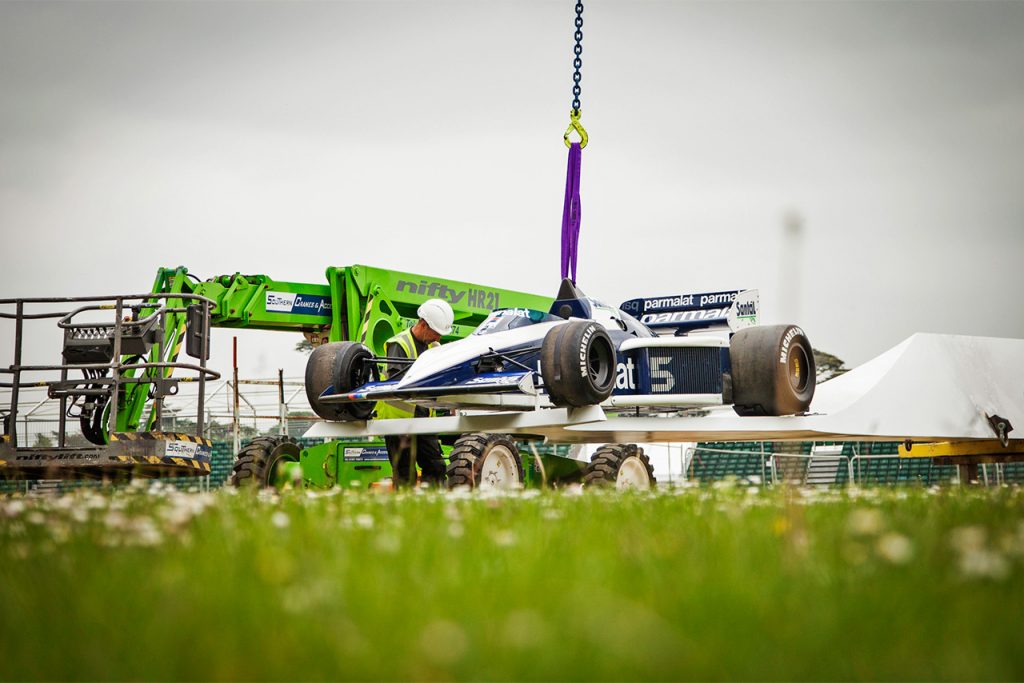
I rushed over and had a strong word with the overseeing engineer, and I had to sit on the car, on the arm, to stop proceedings until I had checked it all. However, they were adamant that they were going ahead, so I rang the Duke of Richmond (Lord March in those days), and he came out of his house and stopped everything.
When I removed the bodywork to check the hidden straps, I saw they hadn’t been fitted – so we were very lucky. What had happened was the foreman, who knew about all the straps, hadn’t turned up for work, and so the guys just got on with it as usual. It wasn’t their fault; they didn’t know about these extra fastenings.
Eventually everything was rigged and the Brabham was securely attached. Charles and I repaired to the balcony of Goodwood House to watch while we nervously drank tea. The lift process was fascinating. First the engineers welded lifting hooks to the end and middle of the arm, and then they lifted it level and gradually hung it upright. From a cherry picker, the central lift straps were moved round to the arm’s underside, so that when it lifted, the structure came up inverted. It was then manoeuvred into position, and welded into place.
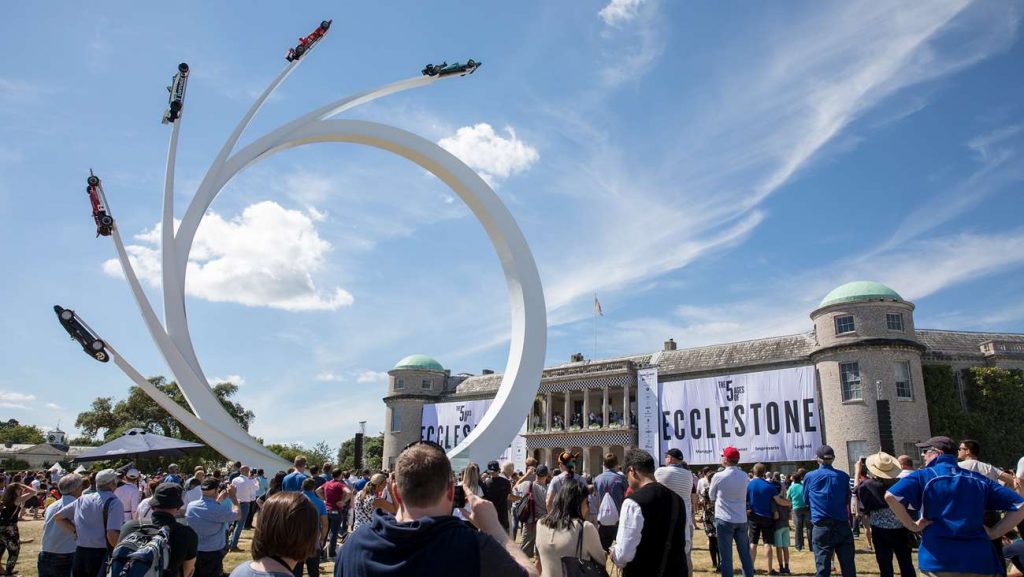
Charles and I breathed a sigh of relief. I told him I wasn’t angry at the guys for going ahead without me checking, so much as terrified at the thought of the BT52 falling off onto the crowds below during the FoS.
In 2017, the BT49 was one of five cars hung from the ‘Catherine wheel’ sculpture during the Five Ages of Ecclestone celebration. The Brabham pointed skywards, and this time the operation went without a hitch. One reason it was a bit easier was that it didn’t have an engine, but it still needed the extra straps.
Both cars were beautifully prepared by George Langhorn, who painted all the McLaren race cars up until he retired. He made up a stencil so we could paint the Michelin name correctly on the new tyres, and he cleaned, painted, mopped and polished every inch of each car until they looked factory fresh.
The Five Ages of Ecclestone event was fabulous, and a wonderful way to say thank-you to Bernie for building F1 into a world-class business and fabulous entertainment. He really did preside over 50 years of the best motor sport in the world, and I was very proud to be part of the celebration of all that he achieved.
Former Ecclestone Collection manager Robert Dean now runs Curated Vehicle Management. See www.c-v-m.co.uk.
